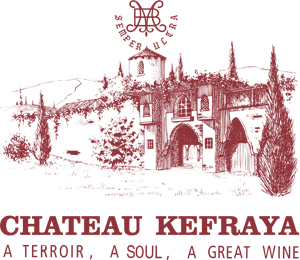
LEBANON is one of the oldest sites of wine production in the world. Phoenician traders exported their wines to and cultivated their vines in the far corners of their colonies. They introduced the world to viticulture and wine appreciation. The majority of vines are grown in Baalbek. French influence on the Lebanese wine industry is apparent in the grape varieties most commonly planted: Cinsaut, Carignan, Cabernet Sauvignon, Merlot, Mourvedre, Grenache and Syrah.
The term wine, or Cherem in Phoenician, is derived from a Phoenician word referring specifically to the fermentation of grapes. Wines were a specialty of the Phoenicians and their ancient Ugaritic poetry and epics mentioned wine with ringing praise. The Rapiuma and others were specific in identifying the choice wine of Lebanon as being one nurtured by their god El and fit for gods and kings. They must have learned about wine from earlier civilizations; however, they perfected viticulture and oenology so that Phoenician wines became prized commodities of the ancient world and a major source of revenue in their exports.
The Phoenician Canaanites were avid wine drinkers. The Bible mentions that the Phoenician Canaanite Melchizedek, King of Salem (King of Jerusalem) and Priest of the Most High God (El Elion), offered bread and wine to Abraham, and Ezekiel refers to the wine of Helbon as a unique commodity. Some believe that the village of Qana (Cana) where Jesus turned water into wine at the wedding feast was a town near Tyre, Phoenicia and not elsewhere. Also, wine was central to the Passover observance among the Jews and continues to be so. It was served for the Passover of the Last Supper between Jesus and his disciples and continues to be central to Christian Eucharistic liturgy of the Mass.
In recent years, nautical archaeology has been instrumental providing archaeological record of Phoenician shipwreck and their cargo. Wine jugs were found in the hull of the oldest ship ever discovered in deep water of the coast of Israel, thirty miles off the Ashkelon coast. In 1999, Dr. Robert Ballard, the discoverer of the Titanic, made an impressive discovery underwater using a special robot and a side-scan sonar system. Ballard's team uncovered two well-preserved Phoenician wine-laden cargo ships dating back to the year 750 BC -- the oldest known deepwater shipwrecks.
Dr. Ballard reported that one of the ships, the largest ancient ship ever discovered measuring sixty feet (18 meters long) was found 1625 feet (500 meters) under the Mediterranean. A smaller ship was found three kilometers away, measured forty-two feet (13 meters) in length. Ballard noted that the ships' contents included many ceramic amphorae were originally filled with wine. Further, he suggested that they were on their way from the port of Tyre to either Egypt or Tunisia when they sank in a violent storm. The amphorae were found intact. Owing to the bitterly cold water temperature, the lack of sunlight, and intense pressure at such depths, the jars were well preserved and in pristine condition. Even though the wood of the vessels had disintegrated, the shape and length of the ships were deduced from the position of the amphorae. From the artifacts recovered -- amphorae, crockery for food preparation, incense stand for offerings to the weather gods, and a wine decanter -- archaeologists were able to identify that the ship's point of origin was Phoenicia.
FAMOUS LEBANESE WINERIES
Château Ksara The country's oldest winery celebrated its 150th birthday in 2007. A household name in Lebanon for the second half of the 20th century, the 1975-90 civil war caused the winery's fortunes to dip until the early '90s, when new investors and a new general manager stopped the rot. [More...]
Château Kefraya
The country's oldest winery celebrated its 150th birthday in 2007. A household name in Lebanon for the second half of the 20th century, the 1975-90 civil war caused the winery's fortunes to dip until the early '90s, when new investors and a new general manager stopped the rot. [More...]
Château Kefraya Château Kefraya's story began in 1950, when Michel de Bustros, founder, Chairman and President, initiated the establishment of a vineyard on a land, sprinkled with rocks, of clay-chalk stony soil at 1100 meters above sea level.[More...]
Château Musar
Château Kefraya's story began in 1950, when Michel de Bustros, founder, Chairman and President, initiated the establishment of a vineyard on a land, sprinkled with rocks, of clay-chalk stony soil at 1100 meters above sea level.[More...]
Château Musar Musar needs no introduction, but readers may not be as familiar with the Hochar Pére et Fils 2000, Musar's second and, according to Serge Hochar, “more accessible” creation. A Cinsault, Cabernet Sauvignon, Carignan blend, it is, as with all Hochar's wines, one that you will either love or dismiss as an anachronism (or worse). [More...]
Massaya
Musar needs no introduction, but readers may not be as familiar with the Hochar Pére et Fils 2000, Musar's second and, according to Serge Hochar, “more accessible” creation. A Cinsault, Cabernet Sauvignon, Carignan blend, it is, as with all Hochar's wines, one that you will either love or dismiss as an anachronism (or worse). [More...]
Massaya A boutique winery founded by Ramzi and Sami Ghosn and their high-profile French partners - the Brunier brothers and Dominic Hébrard - in the mid '90s. The wines have matched their youthful, sexy and exciting image with a slew of plaudits for their three reds [More...]
Domaine Wardy
A boutique winery founded by Ramzi and Sami Ghosn and their high-profile French partners - the Brunier brothers and Dominic Hébrard - in the mid '90s. The wines have matched their youthful, sexy and exciting image with a slew of plaudits for their three reds [More...]
Domaine Wardy Lebanon's second oldest producer. It may produce what is arguably the finest arak in the world, but recent wines have failed to impress. The new owners and the new winemaker, Gerard D'Hautville, have taken giants steps [More...]
Other producersHeritage, Château Fakra , Clos de Qana , Vin Nakad , Karam Winery , Château Belle-Vue , Nabise Mont Liban [More...]
Lebanon's second oldest producer. It may produce what is arguably the finest arak in the world, but recent wines have failed to impress. The new owners and the new winemaker, Gerard D'Hautville, have taken giants steps [More...]
Other producersHeritage, Château Fakra , Clos de Qana , Vin Nakad , Karam Winery , Château Belle-Vue , Nabise Mont Liban [More...]




